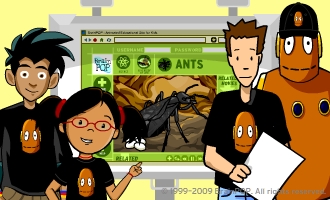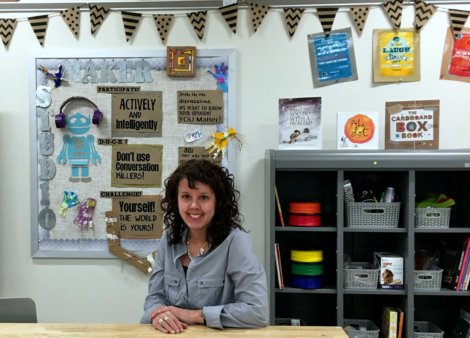Guest Blog: My First Year As A BrainPOP Educator
Posted by allisyn on
Stephanie Filardo will be joining us at our booth at MITC this weekend. Be sure to stop by and say hello if you’re attending!
I was introduced to BrainPOP last fall during my 8-week student teaching by Amber Boyington at Mill Creek Middle School, in Lenexa, Kansas. We used it for 6th grade math and I (a true beginner in the classroom) played it safe by purely showing the video and then taking the quiz. The students had been taught sign language for “a,” “b,” “c,” and “d” before I arrived, so we were set for answering! In my teaching methods class, we discussed and modeled using technology to display math concepts in the classroom, but this was something so different than what I had experienced before. One of the challenges in this school is that class periods were 41 minutes long. This means a teacher has to make every minute count. I found BrainPOP videos were a great way to review material from the previous day and to fill those few minutes at the beginning of the class when taking attendance (or creating answer keys for homework when I’d forgotten to make one the previous day). Not only did the students love Tim and Moby, they were learning.
In the spring, I completed 12 weeks of student teaching in 8th grade Pre-Algebra and Algebra, as well as special education in the resource room. My host school did not have a subscription to BrainPOP, but I keep wondering how the students would have reacted to the addition of the videos (90-minute blocks are a bit tedious after all). I can’t help but wonder if it could have bridged the two-point gap to proficiency on state assessments for some students, especially those receiving special services.
In the summer, I worked at a special school within a district for students with emotional and behavior disorders. The extended school year program was seven weeks and I had four high school students. Three of my students were working on credit in US History. As a math content expert, I was a fish out of water. Raised to criticize the use of textbooks as the main source of information, I began weaving in BrainPOP videos with reading passages from the text. The students were resistant at first, but then a couple days after first using the video, one of my students asked, “Are we going to hear from Tim and Moby today?!” This was huge coming from a student with Asperger’s Syndrome who was not interested in being at school, let alone in the summer. Using BrainPOP forced me to think outside the box with everything I taught. I found myself enjoying spending time making custom graphic organizers to go along with the book that mimicked the ones used in the videos. It really helped me focus my lessons, even when not using a video with the lesson. I also utilized the closed captioning feature and found that it greatly assisted students with taking notes and completing the additional activities.
By the end of the extended school year, traditional paper assessments had been replaced with multimedia projects and culminated with building a Facebook Profile page for one of the United States’ Founding Fathers. By weaving technology tools into the content I was teaching, I was able to incorporate lessons on how to research online, internet safety, using appropriate content on social sites, and so much more. Now that my pre-service experiences are finished, I look forward to taking advantage of every opportunity to keep my ideas fresh and engaging. When I use BrainPOP, I’m no longer a student teacher or a practicum student or even a first year teacher; I have ten years, solid research, and a community of 100,000+ educators supporting me and at my fingertips. I am not just a teacher. I am a BrainPOP Educator.















